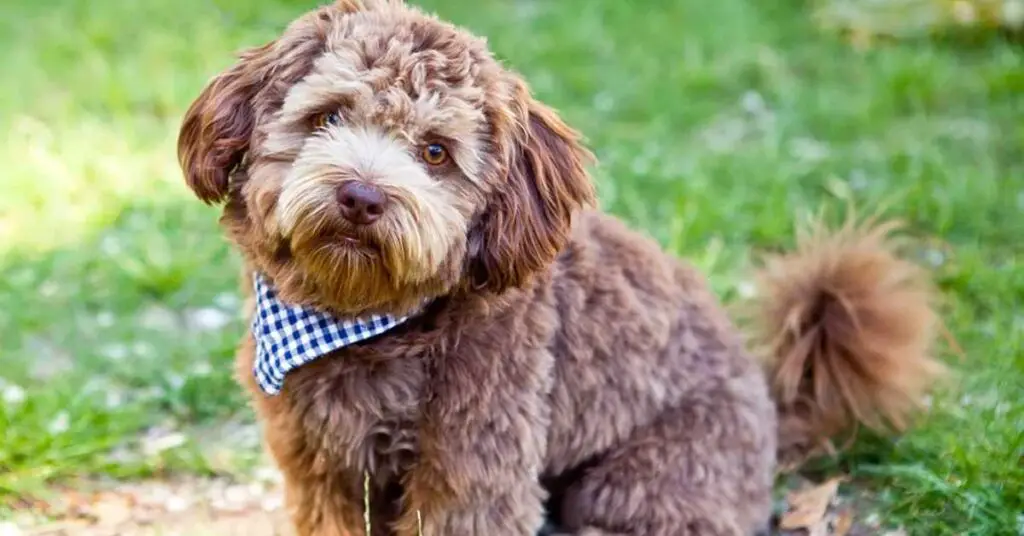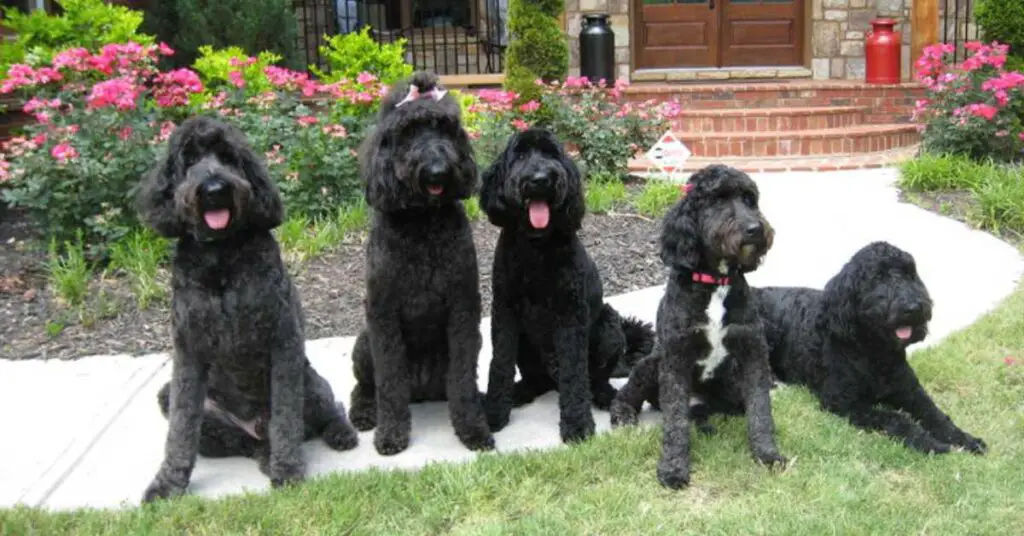Have you ever wondered if Schnoodles can have blue eyes?
While it may seem rare, the possibility of this unique eye color in Schnoodles is a topic that sparks curiosity and intrigue.
Understanding the genetic makeup and potential factors influencing eye color in Schnoodles can shed light on this fascinating aspect of their appearance.
Stay tuned to uncover the truth behind blue eyes in Schnoodles and how to care for these special pups with distinctive eye colors.
Key Takeaways
- Blue eyes are rare in Schnoodles due to genetic factors.
- Eye color in Schnoodles is primarily determined by genetic inheritance.
- Blue eyes do not indicate health issues or specific temperaments in Schnoodles.
- Proper care is essential regardless of Schnoodles’ eye color.
The Genetics of Schnoodle Eye Color
Understanding the genetics behind Schnoodle eye color can shed light on the potential for blue eyes in this popular mixed breed. Genetic inheritance plays a crucial role in determining eye color in Schnoodles. The genes responsible for eye color are inherited from both parents, with certain combinations leading to specific eye colors. Breeding considerations are essential when it comes to predicting the eye color of Schnoodle puppies.
When breeding Schnoodles, it’s essential to consider the eye color of the parent dogs. For example, if both parents have blue eyes, there’s a higher likelihood of the puppies inheriting this trait. However, if one parent has brown eyes and the other has blue eyes, the outcome becomes more unpredictable due to the dominant nature of brown eye genes. Understanding the basics of genetic inheritance and breeding considerations can help breeders make informed decisions to potentially produce Schnoodles with blue eyes.

Common Eye Colors in Schnoodles
Common eye colors found in Schnoodles vary, ranging from brown and hazel to amber and green. Schnoodles, being a mix between Schnauzers and Poodles, often inherit eye colors from both parent breeds. While brown eyes are the most common in Schnoodles, some may have hazel, amber, or green eyes. It’s important to note that blue eyes are considered rare in Schnoodles due to their genetic makeup.
Rare combinations of eye colors like heterochromia, where each eye is a different color, can occur but aren’t as common in Schnoodles. These unique eye colors are usually the result of specific breeding practices aimed at achieving certain traits in Schnoodles. Breeders carefully select parent dogs with desired eye colors to produce puppies with the intended eye color traits. However, it’s essential to remember that eye color can sometimes change as a Schnoodle matures, so initial eye color observations may not always be indicative of the final eye color.
Factors Influencing Schnoodle Eye Color
Factors that influence the eye color of Schnoodles include genetic inheritance from their parent breeds and potential variations in pigmentation levels. Additionally, coat color and breeding practices play a significant role in determining the eye color of Schnoodles.
Here are some key points to consider:
- Coat Color: The color of a Schnoodle’s coat can sometimes be an indicator of the eye color they may have. Certain coat colors are more commonly associated with specific eye colors due to genetic links.
- Breeding Practices: Responsible breeding practices can help maintain and predict certain traits, including eye color, in Schnoodles. Breeders who carefully select parent dogs with desired eye colors can influence the eye color outcomes in their litters.
- Genetic Variation: While genetics play a major role, variations in pigmentation levels can also impact the final eye color of Schnoodles. Sometimes, unexpected eye colors may result from complex genetic interactions or mutations.
Understanding these factors can provide insights into the potential eye colors of Schnoodles and help breeders and owners anticipate the outcomes based on their desired preferences.
Myth Busting: Blue Eyes in Schnoodles
In Schnoodles, the presence of blue eyes is often a subject of misconception that requires clarification. Blue eye myths surrounding Schnoodles have led to confusion among dog owners. It’s essential to understand that while blue eyes are more commonly associated with certain breeds, such as the Siberian Husky, Schnoodles typically don’t have blue eyes. This misconception may stem from a lack of awareness about the genetics behind eye color in Schnoodles.
Schnoodle eye myths can sometimes lead to misguided care practices. For instance, assuming that blue eyes indicate a health issue or a specific temperament in Schnoodles isn’t accurate. In reality, eye color in Schnoodles is primarily determined by genetics, just like in humans. It’s important for Schnoodle owners to focus on providing proper care for their furry companions rather than getting caught up in myths about eye color.
Eye Color Changes in Schnoodles
Eye color changes in Schnoodles may occur due to various genetic factors and developmental stages. Schnoodles, like other dog breeds, can exhibit eye color variations influenced by their genetic makeup. Here are some key points to consider:
- Genetic Influence: The eye color of Schnoodles can be affected by the genes inherited from their parent breeds, the Schnauzer, and the Poodle. These genes can interact in unique ways, leading to a range of eye colors in Schnoodles.
- Developmental Stages: Eye color in Schnoodles can also change as they grow from puppies into adults. Just like human babies, Schnoodle puppies may have different eye colors that eventually settle into a permanent shade as they mature.
- Blue Eyes: While blue eyes aren’t a common trait in Schnoodles, they can occur due to specific genetic combinations. It’s essential to remember that eye color alone doesn’t determine the health or temperament of a Schnoodle, but rather adds to the individuality of each dog in this charming breed.
Caring for Schnoodles With Unique Eye Colors
When caring for Schnoodles with unique eye colors, it’s essential to consider their specific needs and any potential eye-related health concerns that may arise. Eye health is crucial for all dogs, including those with distinctive eye colors. Regular check-ups with a veterinarian can help ensure that any issues are detected early and properly addressed.
Grooming plays a vital role in maintaining your Schnoodle’s eye health. Keep the fur around their eyes clean and trimmed to prevent irritation or infections. Use a damp cloth to gently wipe away any discharge that may accumulate in the corners of their eyes.
In addition to grooming, training and socialization are key aspects of caring for Schnoodles with unique eye colors. Proper training can help your Schnoodle feel more comfortable during grooming sessions and vet visits. Socialization can also reduce stress and anxiety, which may impact their overall eye health.
Frequently Asked Questions
Are Blue Eyes Common in Schnoodles?
Blue eyes in Schnoodles are not common. Eye color genetics play a role, with blue eyes more prevalent in certain dog breeds. While it’s rare, some Schnoodles may have blue eyes due to genetic variation.
Can Schnoodles With Blue Eyes Experience Any Health Issues Related to Their Eye Color?
Blue eyes in Schnoodles can be charming, but it’s vital to consider eye color genetics. Blue-eyed Schnoodles may face potential health issues like sensitivity to light. Understanding these factors can help ensure your pup’s well-being.
How Can I Determine if My Schnoodle Will Have Blue Eyes as a Puppy?
To determine if your schnoodle will have blue eyes as a puppy, understand eye color genetics and how it influences puppy eye development. Research the parents’ eye colors, as this can give you clues about potential eye color outcomes.
Do Schnoodles With Blue Eyes Require Any Special Care or Attention?
Blue-eyed schnoodles don’t need special care beyond regular grooming. Understanding eye color genetics is helpful. Training and providing proper exercise meet their needs. Enjoy your blue-eyed companion’s unique charm while caring for them like any other schnoodle.
Are There Specific Breeders Who Specialize in Producing Schnoodles With Blue Eyes?
Blue-eyed schnoodle breeders carefully select parent dogs with the genetics for blue eyes. These breeders specialize in producing schnoodles with this unique trait. The genetics of blue eyes in schnoodles play a key role in their breeding process.
Conclusion
In conclusion, while blue eyes aren’t common in Schnoodles, they can still occur due to genetic factors.
It’s important to understand the genetics of eye color in Schnoodles and the various factors that can influence it.
Remember to provide proper care for Schnoodles with unique eye colors and monitor any changes that may occur over time.
Stay informed and consult with a veterinarian for any concerns regarding your Schnoodle’s eye health.






